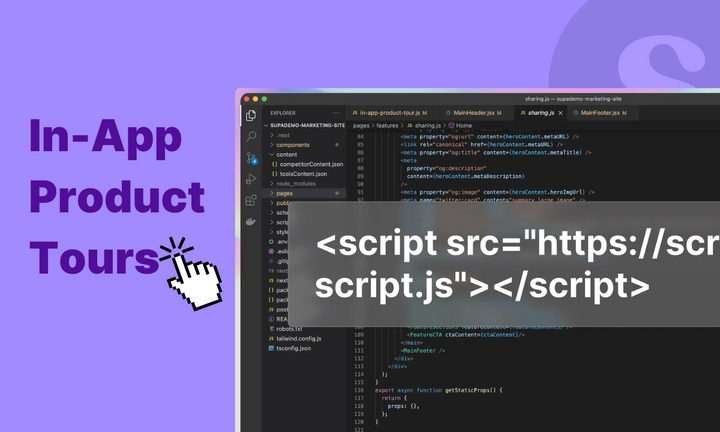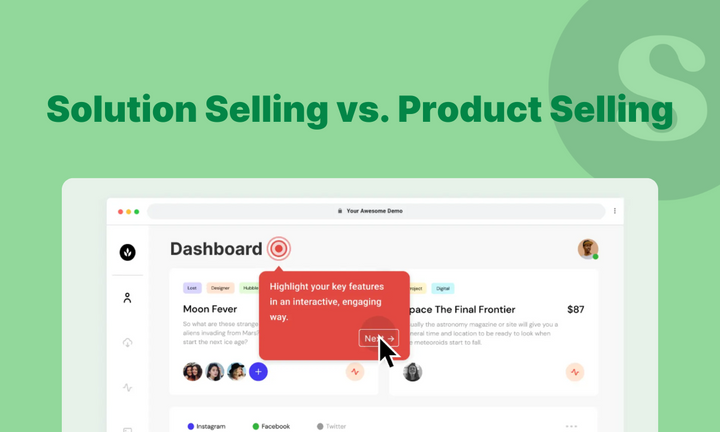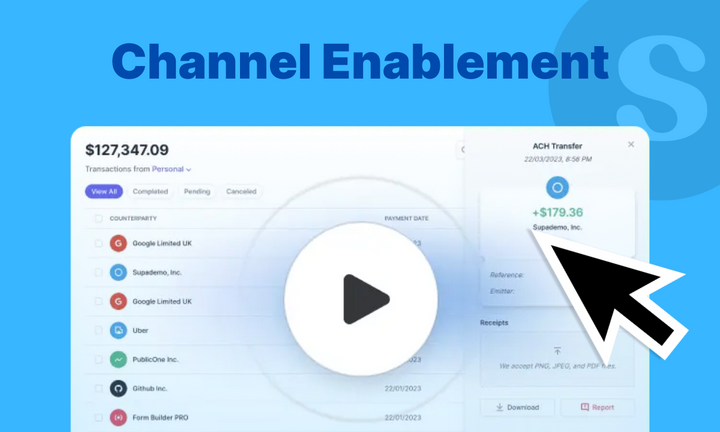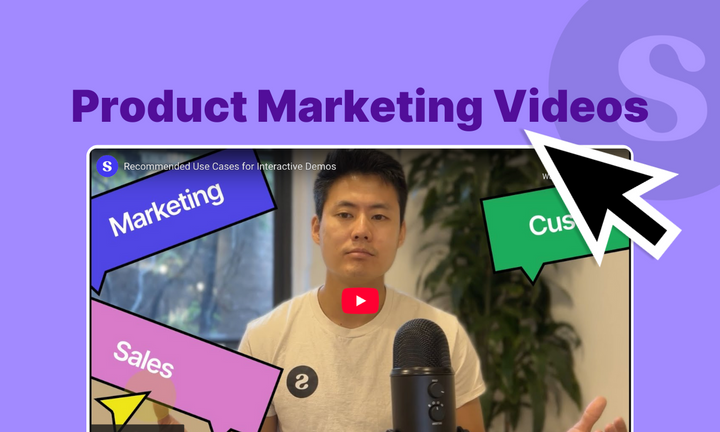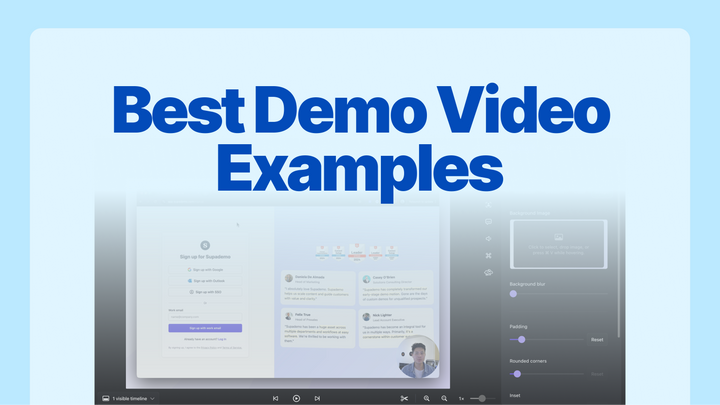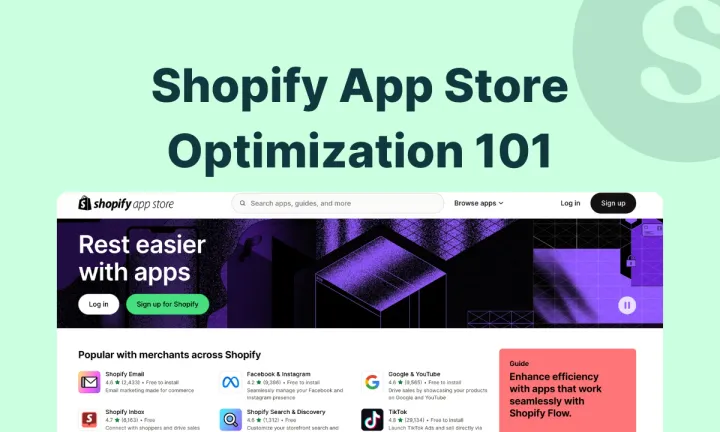Product-led marketing is a smart strategy that focuses on showcasing the product itself as the main star of marketing efforts. Instead of relying solely on traditional marketing methods, product-led marketing teams prioritize putting the product at the heart of the customer experience. This means letting users experience the value of the product firsthand, often right within the product itself.
In today's fast-paced world, where customers can easily switch between vendors, traditional marketing techniques don't always cut it. Customers want more than just flashy ads or lengthy sales pitches. They want real proof of a product's value and the chance to try it out themselves. That's where product-led marketing shines. By emphasizing the product's features and benefits, businesses can better engage their audience and build trust.
In this blog post, we will explore the essence of product-led marketing, its core principles, strategies, and its impact on user acquisition, retention, and business growth.
Understanding Product-Led Marketing
In the typical sales-focused growth model, getting customers involves four steps: acquire, monetize, engage, then expand.
- First, the marketing team finds potential customers and passes them to the sales team.
- The sales team then works hard to persuade these prospects to sign up.
- After that, a customer success team tries to deliver what the sales team promised.
- If the customer finds value in the product during this process, they might want to use it more. But sometimes, customers don't see the value and leave.
In a product-led growth model, customers get involved with the product before paying for it.

In a product-led marketing strategy, the product takes the spotlight in both the customer experience and other marketing activities. This method enables marketers to set their brand apart by crafting a distinct value proposition rather than solely relying on price or features to stand out.
It emphasizes a self-service model, allowing users to explore, understand, and derive value from the product before making purchasing decisions.
8 Core Principles of Product-Led Marketing
Let's look into the foundation of product-led marketing.
1. Your product is your primary marketing channel
In product-led marketing, your product isn't just what you're selling—it's your most powerful marketing tool. Instead of relying solely on traditional methods like ads or cold calls, you let your product speak for itself.
For example, Slack's rapid growth was largely due to its intuitive interface and free plan, which encouraged users to invite colleagues, effectively turning each user into a brand ambassador. Similarly, Dropbox's referral program, offering extra storage for inviting friends, leveraged the product's value to drive viral growth.
2. Data-driven, user-centric strategies
Product-led marketing isn't about guesswork; it's about listening to what your data tells you about user behavior.
By analyzing how people interact with your product—which features they use most, where they get stuck—you can tailor your marketing to their actual needs.
Spotify, for instance, uses listening data to create personalized playlists like "Discover Weekly," showcasing its ability to understand and cater to individual tastes, which in turn attracts and retains users.

3. Address and solve prospects' pain points
Your product should be the answer to your prospects' problems. Identify their challenges through user research, then show how your product solves these issues.
A good way to do this in your marketing copies is to use the Pain-Agitate-Claim-Gain Framework.
Here's an excellent example from Senja.io -

4. Benefits over features
Don't just list what your product does; explain how it makes life better. Instead of saying, "Our project management tool has Gantt charts," say, "Never miss a deadline again with our visual project timelines."
For instance, Evernote's marketing doesn't just tout its note-taking capabilities; it emphasizes the benefit of having all your ideas organized and accessible anywhere, appealing to professionals seeking efficiency.

5. Free/freemium users
Offering a free version or trial isn't just generosity—it's strategic. It lets people experience your product's value without risk, making them more likely to pay later.
For instance, Zoom's free plan, allowing unlimited 1-to-1 meetings and 40-minute group calls, gives users a full taste of its reliable video conferencing. Many then upgrade for longer meetings or more features, having already integrated Zoom into their routines.
Grammarly does this brilliantly: it recognizes that many people struggle with writing errors, so it offers a free browser extension that catches mistakes in real-time, instantly demonstrating its value and encouraging upgrades for more advanced features.

6. Frictionless user onboarding
Make it incredibly easy for new users to get started. A complex onboarding process can deter potential customers.
Here's an example onboarding flow that highlights key features and benefits through a self-paced interactive demo:
7. Self-paced product education and engagement
Not everyone learns the same way or at the same speed. Provide varied, accessible resources—interactive demos, videos, tooltips, articles—so users can explore your product as they prefer.
HubSpot's Academy offers a range of free online courses and certifications, allowing users to deepen their knowledge of its marketing tools at their own pace, which increases product proficiency and loyalty.

8. Value demonstration through the product for customer retention
Value demonstration through the product for customer retention: In product-led marketing, retaining customers isn't about sending cheerful emails or offering discounts—it's about consistently proving your product's worth through the product itself.
Every interaction should reinforce the value you provide, making users think, "I can't imagine working without this." This ongoing demonstration turns satisfied users into long-term customers and even advocates.
Take Asana, the project management tool, as an example. When a team completes a project, Asana doesn't just clear the tasks; it generates a "Project Progress View" that visually summarizes all completed milestones, time saved, and collaborative wins. This feature doesn't just track progress; it quantifies the team's success, directly attributing it to Asana's capabilities.
Seeing this concrete impact—perhaps weeks of work efficiently managed or dozens of deadlines met—makes users viscerally feel Asana's value, significantly boosting retention rates.
Strategies in Product-Led Marketing
- Freemium and Free Trials: Offer free versions or trial periods of the product, allowing users to experience its core features before committing to a purchase.
- In-Product Guidance and Support: Implement interactive guides, tooltips, and walkthroughs within the product interface to assist users in exploring and utilizing the product effectively.
- Feedback Loops and Iterative Development: Encourage user feedback and data-driven insights to continuously iterate and improve the product based on user needs and preferences.
- Viral Loops and Referral Programs: Foster organic growth by implementing referral programs or features that incentivize users to invite others to the product.
Impact of Product-Led Marketing
- User Acquisition and Conversion: By allowing users to experience the product's value firsthand, PLM can lead to higher conversion rates and reduced acquisition costs.
- User Retention and Advocacy: Positive product experiences lead to increased user satisfaction, higher retention rates, and users becoming advocates, promoting the product through word-of-mouth.
- Business Growth and Scalability: PLM can contribute significantly to sustainable business growth by creating a self-sustaining user acquisition and retention cycle.
5 Examples of Product-Led Marketing
To show you what product-led marketing looks like in practice, here are some companies that have used this strategy very well.
1. Slack
Slack's product-led approach revolutionized team messaging. Instead of lengthy sales pitches, Slack offers a generous free plan that lets teams experience its intuitive interface, rich integrations, and searchable history.
The magic happens when users see how Slack transforms their work: scattered emails become organized threads, quick questions get instant answers, and file sharing becomes seamless. As team members invite colleagues to specific channels or the entire workspace, Slack grows organically within organizations.
Its product-led strategy peaked during the 2020 remote work surge; as companies scrambled to stay connected, Slack's self-evident value made it the go-to choice, propelling it from startup to a $27.7 billion Salesforce acquisition.
2. Zoom
Zoom's rise to verb status ("Let's Zoom!") epitomizes product-led success. In a market crowded with clunky video tools, Zoom offered simplicity: click a link, and you're in a high-quality call.
No accounts needed for guests. Its free tier, allowing unlimited 1-to-1 calls and 40-minute group meetings, let users experience Zoom's reliability and user-friendliness.
When the pandemic hit, this freemium model positioned Zoom perfectly. People already familiar with it for personal calls instantly saw its fit for remote work. Schools and businesses, needing longer meetings, upgraded effortlessly.
By letting its product's ease of use speak volumes, Zoom grew from 10 million daily users in December 2019 to over 300 million by April 2020.
3. Canva
Canva turned the complex world of graphic design into a drag-and-drop delight. Recognizing that not everyone is a Photoshop pro, Canva offers a vast library of templates for everything from Instagram posts to resumes.
Users start free, gaining access to thousands of designs. The brilliance is in the experience: select a template, customize colors and text, and voilà—professional-looking graphics in minutes.
This instant gratification is addictive.
Users, amazed by their creations, share designs on social media, often with Canva's subtle watermark, driving organic growth. Many then upgrade to Canva Pro for brand kits, resizing magic, and more—not because of ads, but because the free version showed them how much more productive they could be.
3. Dropbox
Dropbox's early days are a product-led marketing masterclass. In 2008, cloud storage was new, and many were skeptical. Instead of complex explanations, Dropbox offered a simple premise: install our app, and your files are available on any device.
This ease of use was compelling, but their referral program was the growth rocket. They rewarded users with 500MB of extra space for each friend who joined, up to 16GB. This turned happy users into enthusiastic marketers; everyone wanted more space, and telling friends about this "magic folder" was the easiest way to get it. The product's silent sync and reliable access did the convincing, while referrals did the spreading.
Within 15 months, Dropbox exploded from 100,000 to 4 million users, showcasing the power of product-driven, user-initiated growth.
4. HubSpot
HubSpot's product-led strategy centers on education, turning its tools into teachers. They knew businesses were eager to master digital marketing but found it overwhelming. So, HubSpot offers a suite of free tools: website graders, email signature generators, even invoice templates.
Each tool solves a specific problem while subtly showcasing a feature from HubSpot's paid CRM.
For example, their Website Grader analyzes SEO, performance, and security, then suggests improvements—many achievable through HubSpot's platform.
This value-first approach continues with HubSpot Academy, providing free online courses on inbound marketing, sales, and more. As users learn and apply these skills, often using HubSpot's free tools, they naturally see how its full CRM could amplify their efforts.
By making its product an educational journey, HubSpot nurtures leads who are not just qualified but truly understand the value they're buying.
5. Typeform
Typeform reinvented online forms, making them engaging rather than a chore. Most forms feel like interrogations, but Typeform presents one beautifully designed question at a time, often with eye-catching visuals or friendly language.
This "conversational" approach, where the form seems to be listening, dramatically boosts completion rates. Typeform's product-led strategy starts with its form creator: users quickly see how drag-and-drop simplicity and design templates can make any survey look professional. The free plan lets you create unlimited forms, experiencing features like conditional logic that adapts questions based on responses.
Many users, after seeing higher engagement and richer data from their Typeform surveys, gladly upgrade for more advanced features like hidden fields or payment integration.
Key to their growth is the subtle "Created with Typeform" link on free forms; as these attractive surveys circulate, they market themselves, turning respondents into new Typeform users.
How Supademo Can Help Boost Your Product-Led Marketing Efforts?
In product-led marketing, the goal is to show customers how useful your product is, not just sell it like any other item. This method does more than just bring in new customers—it also helps keep them.
The focus isn't only on making a sale; it's about giving users an experience they'll remember and making them truly excited about what your product can do for them.
That's exactly what Supademo can help with - by offering a real-time preview of your product's use cases and how they work, you can better capture your audience's attention and interest.

Supademo helps create product demos that scale product-led marketing. Here's how -
- Increase conversions: Showcase features interactively, reducing perceived barriers and elevating website conversion rates seamlessly.
- Drive MQLs with interactive demos: Engage prospects with self-paced interactive demo videos, replacing static assets and driving top-of-funnel MQLs effortlessly.
- Track and measure intent: Gain insights into viewer behavior, completion rates, and engagement levels to understand user intent effectively.
Here are some ways you can incorporate Supademo in your product-led marketing efforts -
- Websites and landing pages: Embed interactive demos on websites to highlight your product's "aha moment" without any subscription paywall.

- Email & social campaigns: Drive product-led marketing with interactive demos in email campaigns to drive awareness, interest and conversions.

- Product launches & updates: Increase adoption and activation by using interactive demos to introduce new and existing features.

FAQs
What is product-led marketing?
Product-led marketing focuses on using the product itself as the main driver of user acquisition, retention, and growth.
How does product-led marketing differ from traditional marketing?
It prioritizes the user experience and product value over promotional efforts to attract and retain customers.
Why is product-led marketing important?
It aligns marketing with the actual product experience, leading to higher customer satisfaction and organic growth.
Which companies benefit from product-led marketing?
SaaS, tech startups, and digital platforms often benefit, as users can easily experience value through trials or demos.
What role does data play in product-led marketing?
Data helps optimize the user journey by identifying friction points and improving user engagement.
How can product-led marketing drive growth?
By leveraging the product’s value to convert and retain users, often leading to faster, scalable growth.



